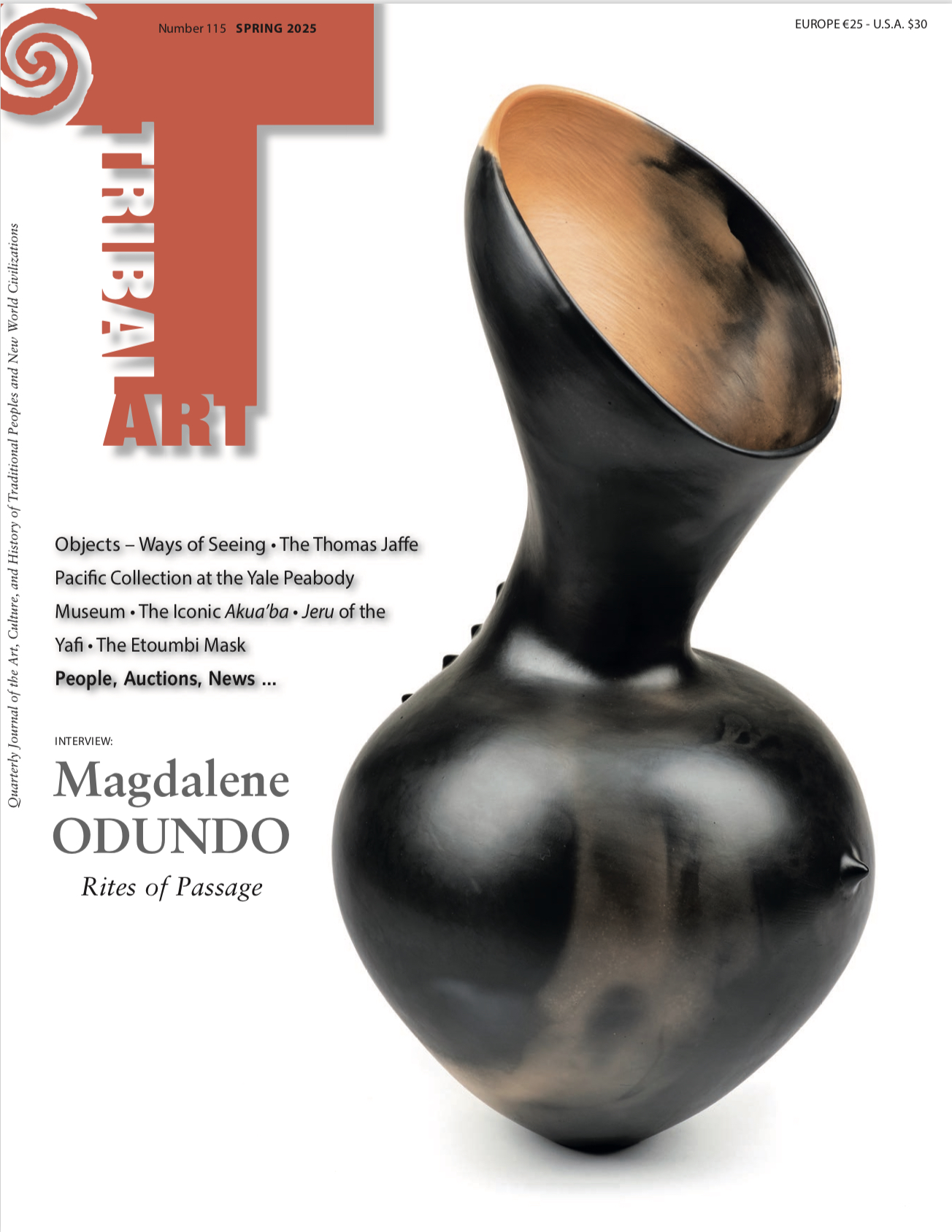Scarifications: Miquel Barceló in Geneva

ABOVE: Rhythm pounder. Senufo; Lataha village, Côte d’Ivoire.
19th century.
Wood.
H: 118 cm.
Ex. Emil Storrer (until 1952);
Josef Mueller.
Musée Barbier-Mueller, inv. 1006-1.
Image © Musée Barbier-Mueller; photo: Roger Asselberghs.
For several years now, the Musée Barbier-Mueller has been exploring the affinities between contemporary Western art and the traditional arts of Africa, Oceania, and the Americas through exhibitions based on the concept of dialogue developed by a well-known artist. Scarifications, an exhibition that opened in Geneva on October 11, 2023, is the latest iteration of this series, and it offers a stimulating interaction between the world of Miquel Barceló and the museum’s collection of traditional world art. The Felanitx-based artist is known for his interest in Africa—and particularly Mali, where he lived and created for many years—as well as for the deep bonds of friendship that connected him to Monique and Jean Paul Barbier-Mueller. Although this would be enough to justify the present rapprochement, the topic of scarification as the common thread for this show adds a note- worthy dimension to the subject. The scratches, nicks, burns, and discoloration that animate the surfaces of Barceló’s works find harmonious reflection in the museum’s masks, statues, pottery, and other objects from Africa, Oceania, Native North America, and Thailand. These are present- ed to the visitor as manifestations of individual artistic impulses as much as being expressions of cultural values and traditions.
Three Questions for Anne-Joëlle Nardin, Director of the Barbier-Mueller Museum in Geneva
Tribal Art magazine: The Scarifications show is the first exhibition you have presented since you were named head of the museum in January 2023. What does this project mean to you?
Anne-Joëlle Nardin: First of all, it’s an incredible opportunity because Miquel Barceló’s work speaks to me. To be able to present a selection of works by this great artist together with objects from the museum, which also touch me deeply, has been an enriching experience. Secondly, as Barceló points out in the catalogue, this exhibition is very much a tribute to Monique and Jean Paul Barbier-Mueller and to the long history of friendship nourished by a shared passion for Africa and artistic creation in all its forms. I hope our visitors will be won over by what we have been able to put together to offer them. I, for one, am deeply moved.
T.A.M.: Some of the greatest highlights of the Musée Barbier- Mueller’s holdings are among the pieces featured in this show. What place has been left to new discoveries?
A.J.N.: Our priority was to select works from our collection that would best resonate with Barceló’s creations, so formal convergence was the main selection criterion. That said, we also sought to indulge ourselves by putting out some of our truly emblematic pieces, like our large Senufo deble figure as well as pieces less often seen by our public, such as the small Mississippi pendant mask and pottery pieces from Burkina Faso and Nigeria. But overall, what we’re offering our visitors here might be thought of more as rediscoveries than as discoveries.
T.A.M.: And for you at the museum, has this new immersion in your collection allowed you to gain new insight into the objects in it?
A.J.N.: Absolutely! This project was an opportunity to take stock of and review what we had published in the past about each of the works on display. Then, based on what we found, we turned again to the various specialists who had written about them and asked them to update their assesments to reflect their more recent research. We also asked them to reexamine the objects carefully in the light of the scarification topic at the heart of the exhibition. This allowed us to revisit the relevant vernacular terminology while also gaining a better understanding of the particular contexts in which the pieces were used. And that was just the start.
Scarifications, Miquel Barceló & le musée Barbier-Mueller
From 12 October 2023 through 21 April 2024
Musée Barbier-Mueller, Geneva
See our article in issue 110 - Winter 2023
ABOVE: Installation view of Scarifications, Miquel Barceló & le musée Barbier-Mueller. Photo © Luis Lourenço.
ABOVE: Installation view of Scarifications: dialogue between a ceramic by Miquel Barceló titled PSR (1998)
and a Luluwa figure from the Democratic Republic of the Congo from the Barbier- Mueller collection.
Photo © Tribal Art magazine.
ABOVE: Installation view of Scarifications: dialogue between a woodcut by Miquel Barceló titled Arthur Schopenhauer (2015), from the series “Lletraferits,” and a helmet mask from the Benue River region in Nigeria from the Barbier-Mueller collections.
Photo © Tribal Art magazine.
ABOVE: Installation view of Scarifications: dialogue between a work on paper
by Miquel Barceló titled Sin título (1999) and two Dogon figures from Mali from the Barbier-Mueller collection.
Photo © Tribal Art magazine.
ABOVE: Installation view of Scarifications: dialogue a work on paper
by Miquel Barceló titled Masque Psoriasis (2000) and a Mississippian pendant mask from the Barbier-Mueller collection.
Photo © Tribal Art magazine.





